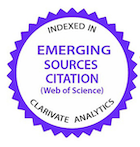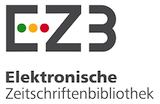EFFICIENCY OF TRIS EXTENDERS AND BOTU-CRIO ® ON SEMINAL PARAMETERS IN STALLION BREEDS QUARTER HORSE AND MANGALARGA MARCHADOR
DOI:
https://doi.org/10.1590/1809-6891v15i325327Keywords:
Animal SanityAbstract
The limiting factor in the cryopreservation process of equine semen is related to the species, as they present a great variability in the ejaculate’s characteristics after thawing. The aim of this study was to evaluate sperm viability after thawing, from Quarter Horse and Mangalarga Marchador stallions using two extenders (Botu-crio and Tris) in cryopreservation. To this end, we analyzed the physical characteristics of fresh semen, the sperm membrane functionality by the hypoosmotic swelling test (HOST), total motility and vigor by the Thermoresistance Test (TRT), progressive motility by a computerized system CASA (Computer-Assisted Semen Anlyses) and acrosomal membrane integrity and functionality of the mitochondria by epifluorescence microscopy. After thawing, the extender Botu-crio® better preserved motility, vigor and integrity of the plasma membrane. There was no significant difference between breeds for the thermoresistance test after twaing. Quarter Horse showed higher percentage of bigger defects in the sperm pathology analysis.
KEYWORDS: cryopreservation, equine, extender, semen.
Downloads
Published
How to Cite
Issue
Section
License
Copyright (c) 2014 Brazilian Animal Science/ Ciência Animal Brasileira

This work is licensed under a Creative Commons Attribution 4.0 International License.
Authors who publish with this journal agree to the following terms:
- Authors retain copyright and grant the journal right of first publication with the work simultaneously licensed under a Creative Commons Attribution License that allows others to share the work with an acknowledgement of the work's authorship and initial publication in this journal.
- Authors are able to enter into separate, additional contractual arrangements for the non-exclusive distribution of the journal's published version of the work (e.g., post it to an institutional repository or publish it in a book), with an acknowledgement of its initial publication in this journal.
- Authors are permitted and encouraged to post their work online (e.g. in institutional repositories or on their website) prior to and during the submission process, as it can lead to productive exchanges, as well as earlier and greater citation of published work (See The Effect of Open Access).































